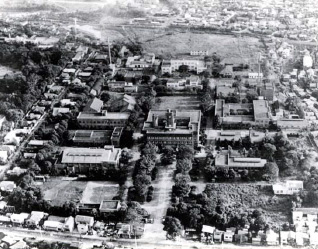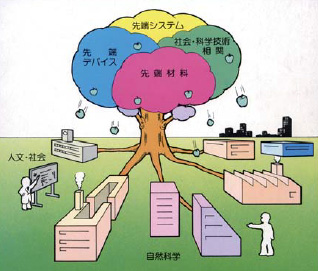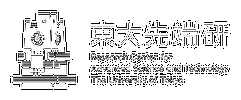Before RCAST establishment
The history of Research Center for Advanced Science and Technology (RCAST), the University of Tokyo, dates back to 1918 when the Aeronautical Research Institute, Tokyo Imperial University. The Aeronautical Research Institute was originally based at Etchujima, but in the wake of the Great Kanto Earthquake was relocated to the western edge of the site of the Agriculture Faculty of the University of Tokyo (now Komaba II Research Campus). After World War II, there were a series of reorganizations, involving the Institute of Science and Technology, Aeronautical Research Institute, Institute of Space and Aeronautical Science, and the Institute of Interdisciplinary Research, Faculty of Engineering, as a result of which RCAST was established.
Aeronautical Research Institute, Institute of Science and Technology, Institute of Space and Aeronautical Science
1. Aeronautical Research Institute
The first steps towards the creation of an aeronautics research organization within Tokyo Imperial University were taken in 1916. In that year plans were made to establish a faculty of aeronautics at the Technical College attached to Tokyo Imperial University, with the aim of training engineers in aeronautics. Then, in 1920, the Aeronautics Faculty was established at the Technical College. Meanwhile, in 1916, in order to set up a basic research organization for aeronautics, the Aeronautics Research Committee was established within the Technical College. It was this organization that was established as the Aeronautical Research Institute attached to Tokyo Imperial University in 1918, at a landfill site at Etchujima in the old Fukagawa ward of Tokyo.
The military importance of aircraft came to be acknowledged during World WarT, which lasted from 1914 to 1918, and in 1921, when it was decided to expand the facilities of the Aeronautical Research Institute in a five year plan starting from that year, the Institute changed from being gattachedh to Tokyo Imperial University to an Institute gofh the University.
It was while work on the expansion of the facilities was going on that the Great Kanto Earthquake struck, on September 1, 1923, and the Institute was very badly damaged. Etchujima, where the Aeronautical Research Institute was sited, was only slightly damaged by the earthquake itself, but in the resulting fire the Institute suffered tremendous damage, with the loss of all of the wooden structures, which accounted for more than half of the Institutefs buildings. After proposals to rebuild the Institute had been studied, it was decided to relocate the facility to the western edge of the site of the Agriculture Faculty. This is now Komaba II Research Campus, the current home of RCAST. In December, 1927, some of the buildings were completed and the relocation work began. The full relocation of the facility was completed in September, 1930, some seven years after the earthquake and fire. Although the work of the Aeronautical Research Institute was unavoidably interrupted by the earthquake and fire, it subsequently came to shoulder the very great expectations of the state. This can be seen from the fact that it was visited on successive occasions by members of the imperial family, including as part of visits by Prince Takamatsu in January, 1930, the Emperor himself in May, 1931, and the Crown Prince Fushiminomiya in April, 1932. This shows not only that the Aeronautical Research Institute was then the most modern of the Universityfs large research institutes, but how great the national expectation of aeronautical research was. In fact, photographs and film of the imperial visit have been kept and can be viewed at the Archives of the University of Tokyo.
2. Occupation policy and the Institute of Science and Technology
Along with military expansion, the Aeronautical Research Institute was also expanded and, as a natural consequence, with the end of World WarU, the Institute found itself at a crossroads.
In 1945, the Occupation Forces issued a decree banning all aircraft related activities, from basic research to manufacture and operation. As a result of this measure, the Aeronautical Research Institute was closed on January 9, 1946, and half of the staff left the Institute, with the remainder staying at Komaba II Campus as staff of the newly established Institute of Science and Technology.
In 1950, the Radiation Chemistry Research Institute was merged with the Institute of Science and Technology, and research in the fields of chemistry and proteins was conducted.
3. Aeronautical Research Institute reinstated and Institute of Space and Aeronautical Science established
The ban on aeronautical research under the Occupation was finally lifted in 1956. With that, after much study and discussion in the University, the Aeronautical Research Institute was established in April, 1958, gfor the purposes of studying academic theory and applied research into aviationh.
In 1964, six years after its resurrection, the Aeronautical Research Institute was reborn as the Institute of Space and Aeronautical Science (ISAS), a national university joint use research institute within the University of Tokyo.
Though the Institute of Space and Aeronautical Science followed on from the Aeronautical Research Institute, its huge size meant that reorganization was only a matter of time. As a result, the Institute was split into two separate organizations, one the ISAS, an inter-university research institute under the then Ministry of Education, and the other the Institute of Interdisciplinary Research, Faculty of Engineering, the University of Tokyo.
In 1981, when the Institute of Space and Astronautical Science was split into two, many of the faculty members transferred to ISAS at Fuchinobe, and the remainder continued their research as before at Komaba II Research Campus. However, the latter group was not allowed to continue as an independent department.
There was discussion within the University as how best to deal with this group, and it was considered that either the Faculty of Science or the Faculty of Engineering should take responsibility, and it was finally decided that a research institute should be established attached to the Faculty of Engineering, with a time limit of seven years. This was the establishment of the Institute of Interdisciplinary Research, Faculty of Engineering.
@

Aeronautical Research Institute whole view. (Year unknown, believed circa 1959 to 1961.)
RCAST concept
So, how did the establishment of RCAST develop? In April, 1986, Professor Inose, Dean of the Faculty of Engineering, began studying the forming of a successor organization to the Institute of Interdisciplinary Research within the Research Organization Committee of the Faculty of Engineering.
The organizational structure of RCAST followed that commonly used by corporate research institutes, which is rarely adopted by universities. This was said to have been a result of Professor Inosefs having spent some time in the private sector after graduating from university. In addition, it may be said that this was an expression of his feeling that it was necessary to bring the winds of change into university research institutes.
Similarly, the four mottoes that are considered synonymous with RCAST are thought to have been suggested mainly by Professor Inose. From the basic policy that the new organization should reject the traditional limitations of the university and become a leader in the university, the four mottoes of gInterdisciplinary Approach,h gMobility,h gInternational Perspectiveh and gOpennessh were established.
Thus, the concept was formulated principally by Professor Inose, but it was the so-called RCAST gSEVEN SAMURAIh who put it into action. The professors, finding it much easier to take action than when they had been based at Hongo, created RCASTfs foundations and unique culture in many ways, establishing the Universityfs first corporate sponsored research program, setting up a graduate school for working adults and attracting the brightest minds in order to make even further advances.
The fact that RCAST is so highly esteemed for its research environment today may be said to be the gift of the labors and achievements of the gseven samuraih and other early instructors.
It may be said that it is precisely because the early days were so difficult that RCAST subsequently continued to reform its organization and succeeded in continuing to produce outstanding research results.
(Excerpt from gThe 20 Year History of Research Center for Advanced Science and Technologyh.)

RCASTfs conceptual drawing on the front cover of a pamphlet produced in 1986, just before its founding. The illustration symbolizes the RCAST founding principles, with the fruits of the research in RCASTfs four main fields being returned to society, and feedback from society being utilized in further research.

